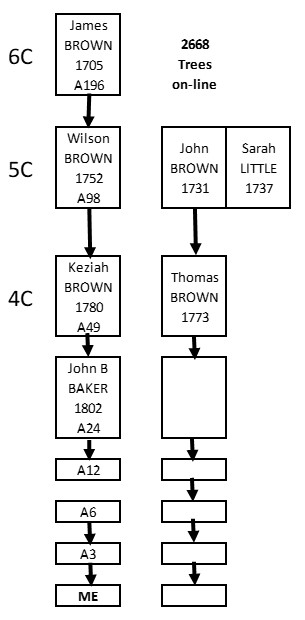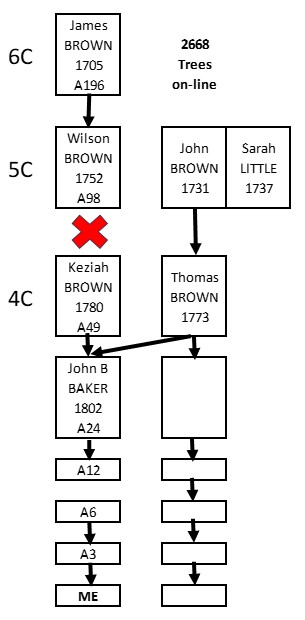When working with Matches on one side (Maternal or Paternal), segment Triangulation is a snap. Overlapping segments are all you need! The overlap should be at least 7cM, and more is better.
The basic rules to form Triangulated Groups, were designed to insure your overlapping shared DNA segments were on the same side – in other words on just one of your chromosomes. This means, from your viewpoint, the overlapping segments were both (or all) on your maternal *or* paternal chromosome. It didn’t matter which side it was on for your Match. You can have lots of shared segments on one chromosome, but some may be on your maternal chromosome and the others on your paternal chromosome. It is virtually impossible for Match A’s shared segment on your maternal chromosome to also match Match B’s shared segment on your paternal chromosome. So the requirement is/was to compare Match A and Match B to insure they match each other – and are thus on the same chromosome with you. *IF* you already know Match A and Match B are on, say, your maternal side, then their shared DNA segments with you would be on your maternal chromosome, and there is no additional need to compare them to each other – they Triangulate.
I am sure, in the grand scheme of genetic genealogy, that an occasional glitch could occur. I’d estimate this as way less than 1% probability.
FTDNA has maternal and paternal buckets which appear to be pretty accurate. If the companies designated a “side” and allowed us to filter Matches based on that side, it would sure speed up segment Triangulation. Just look at a spreadsheet for natural crossover breaks in each chromosome.
In the meantime, if you can designate your Matches as Maternal or Paternal in some way (compare to a parent’s test, ethnicity, shared matches, etc.), you can use that info to filter your Matches and ease the segment Triangulation process. There’s still a lot of work to do, but this should ease the process some.
[10E] Segment-ology: Triangulation on a Side Is a Snap by Jim Bartlett 20230730




